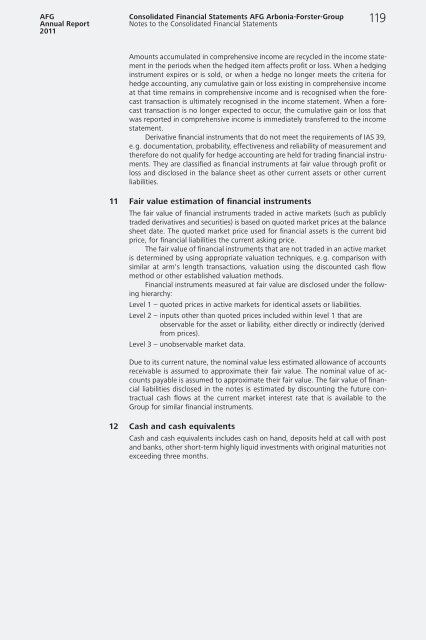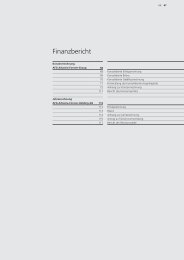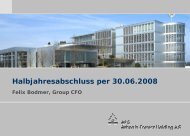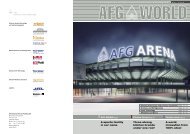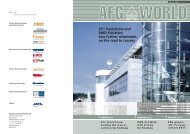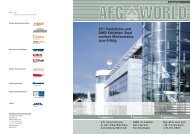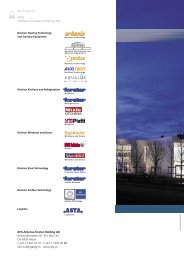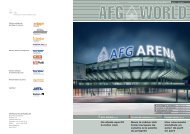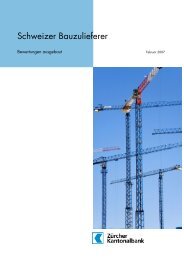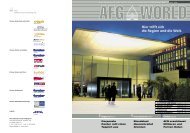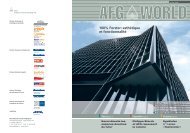Financial Report
Financial Report
Financial Report
You also want an ePaper? Increase the reach of your titles
YUMPU automatically turns print PDFs into web optimized ePapers that Google loves.
AFG<br />
Annual <strong>Report</strong><br />
2011<br />
Consolidated <strong>Financial</strong> Statements AFG Arbonia-Forster-Group<br />
Notes to the Consolidated <strong>Financial</strong> Statements<br />
119<br />
Amounts accumulated in comprehensive income are recycled in the income statement<br />
in the periods when the hedged item affects profit or loss. When a hedging<br />
instrument expires or is sold, or when a hedge no longer meets the criteria for<br />
hedge accounting, any cumulative gain or loss existing in comprehensive income<br />
at that time remains in comprehensive income and is recognised when the forecast<br />
transaction is ultimately recognised in the income statement. When a forecast<br />
transaction is no longer expected to occur, the cumulative gain or loss that<br />
was reported in comprehensive income is immediately transferred to the income<br />
statement.<br />
Derivative financial instruments that do not meet the requirements of IAS 39,<br />
e.g. documentation, probability, effectiveness and reliability of measurement and<br />
therefore do not qualify for hedge accounting are held for trading financial instruments.<br />
They are classified as financial instruments at fair value through profit or<br />
loss and disclosed in the balance sheet as other current assets or other current<br />
liabilities.<br />
11 Fair value estimation of financial instruments<br />
The fair value of financial instruments traded in active markets (such as publicly<br />
traded derivatives and securities) is based on quoted market prices at the balance<br />
sheet date. The quoted market price used for financial assets is the current bid<br />
price, for financial liabilities the current asking price.<br />
The fair value of financial instruments that are not traded in an active market<br />
is determined by using appropriate valuation techniques, e.g. comparison with<br />
similar at arm's length transactions, valuation using the discounted cash flow<br />
method or other established valuation methods.<br />
<strong>Financial</strong> instruments measured at fair value are disclosed under the following<br />
hierarchy:<br />
Level 1 – quoted prices in active markets for identical assets or liabilities.<br />
Level 2 – inputs other than quoted prices included within level 1 that are<br />
observable for the asset or liability, either directly or indirectly (derived<br />
from prices).<br />
Level 3 – unobservable market data.<br />
Due to its current nature, the nominal value less estimated allowance of accounts<br />
receivable is assumed to approximate their fair value. The nominal value of accounts<br />
payable is assumed to approximate their fair value. The fair value of financial<br />
liabilities disclosed in the notes is estimated by discounting the future contractual<br />
cash flows at the current market interest rate that is available to the<br />
Group for similar financial instruments.<br />
12 Cash and cash equivalents<br />
Cash and cash equivalents includes cash on hand, deposits held at call with post<br />
and banks, other short-term highly liquid investments with original maturities not<br />
exceeding three months.


